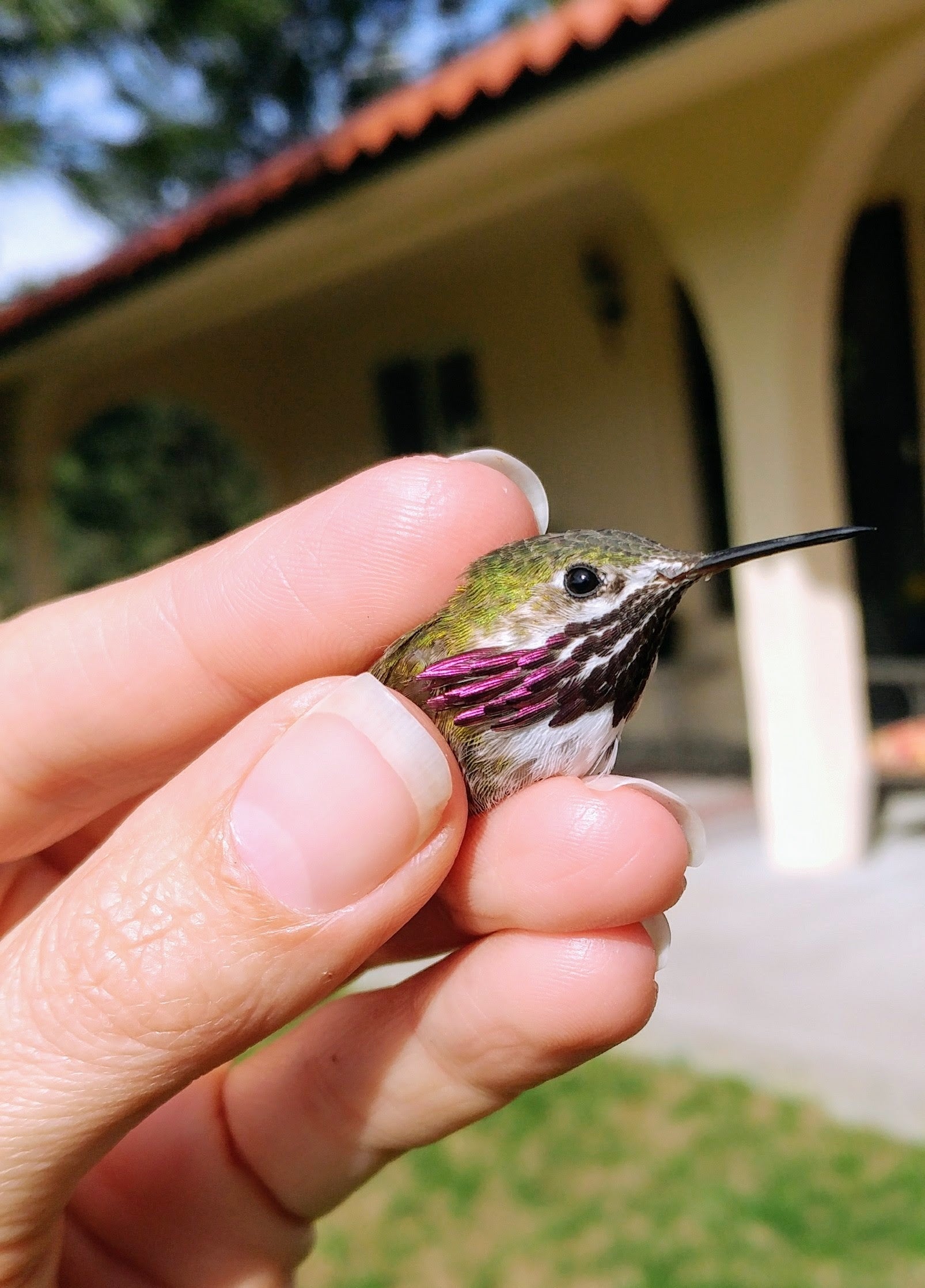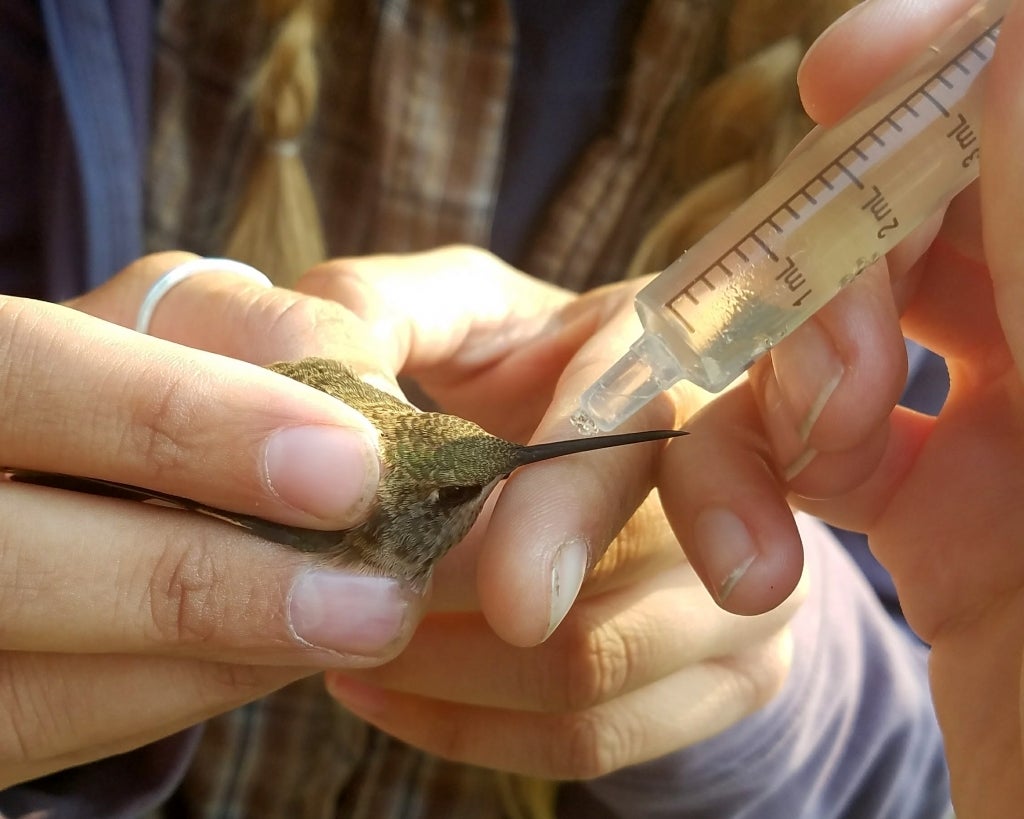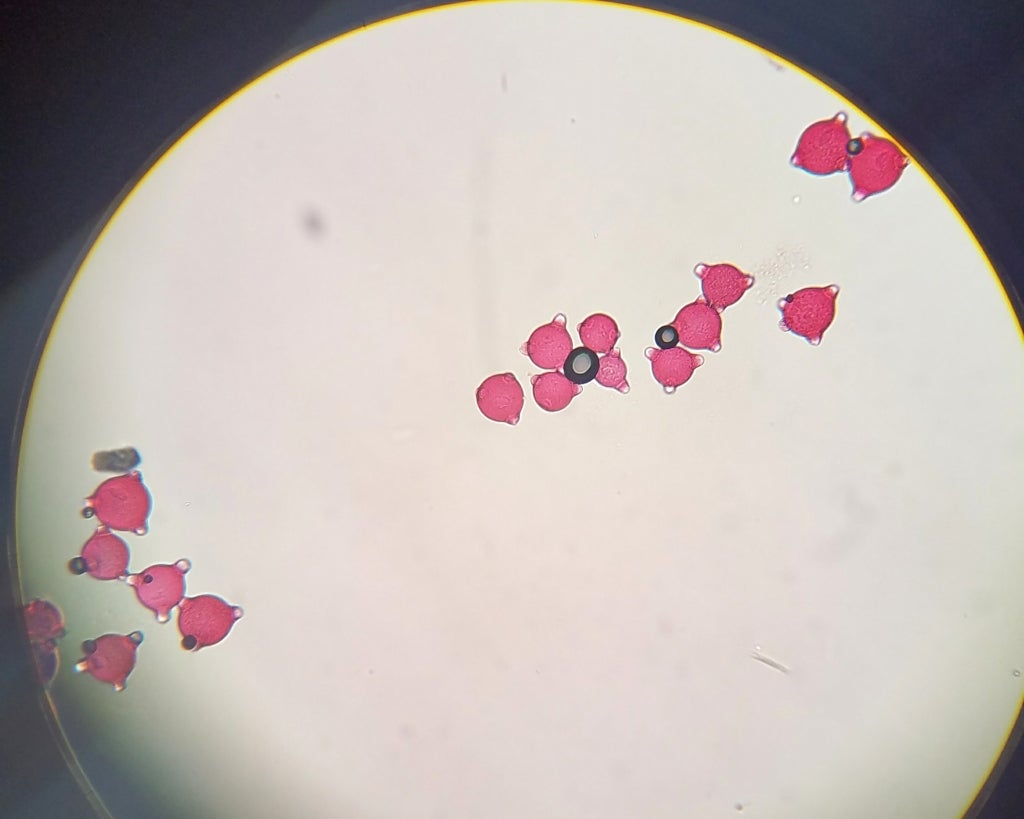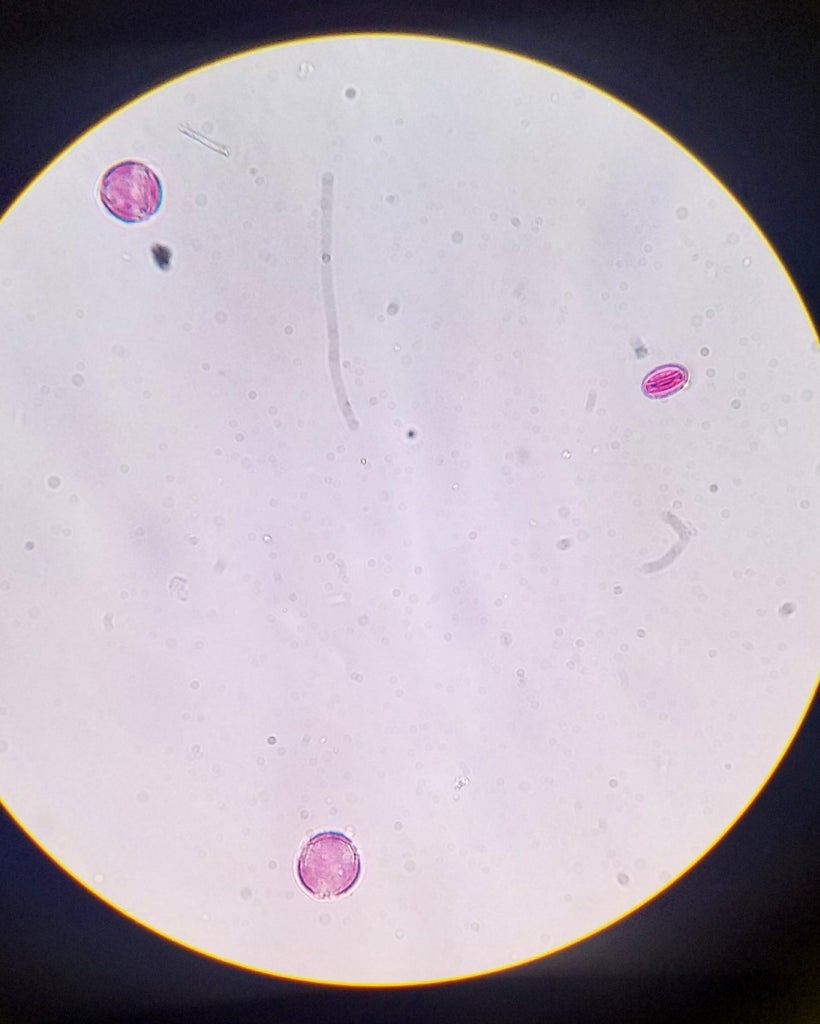For years IBO has dreamed of adding pollen sampling to our summer hummingbird monitoring project to help us learn more about hummingbird diet. Thanks to some funding provided by the Murdock Partners in Science Program we have finally been able to make that a reality!

The Partners in Science Program
In 2017 we started an exciting new project as part of the Partners in Science Program. This program pairs high school teachers with researchers at universities to provide two summers of research experience for science teachers. We’ve had three successful Murdock teachers work on songbird banding projects in the past–Larry Barnes, Lindsey Lockwood, and Steve DeMers — but 2017 marks our very first hummingbird Murdock project.
We lucked out and found a great teacher to take this project on. Kate Dircksen from Capital High School is a science teacher with a background in Botany. This made her the perfect candidate for this project since she knows a lot more about Idaho’s wildflowers than we ornithologists do!
Hummers and Climate Change: Why does this matter?
Hummingbirds evolved to use day-length cues to decide when to migrate. In the past, day-length was matched with plant flowering and hummingbirds nested during peak blooms. Climate change is causing a breakdown in this connection; flowers are appearing earlier because of earlier springs. But hummingbirds follow the same day-length every year and may arrive too late to catch peak flowering.
Pollen samples from hummingbird foreheads will help us learn what plants hummingbirds use and when. We want to document their favorite plants and understand how climate change affects these. This will be important for planning the best way to conserve hummingbirds in the future.

Discoveries this summer
For our first summer we focused on building a pollen library from plants at our hummingbird research site in Idaho City. Kate collected and made microscope slides of more than 90 pollen specimens. We cataloged pollen grains from more than 70 different species of wildflowers in the Boise National Forest.

At the end of this summer we collected 6 test samples of pollen from hummingbird foreheads in Idaho City, and compared these samples to our pollen library. By using a microscope to view the samples we were able to discover species richness and diversity for each sample.
Summer 2018
Next summer we’ll focus on collecting more samples from hummingbird foreheads. Kate will use the pollen library to identify the pollen and determine what plants make up the diet of Idaho City hummingbirds.
